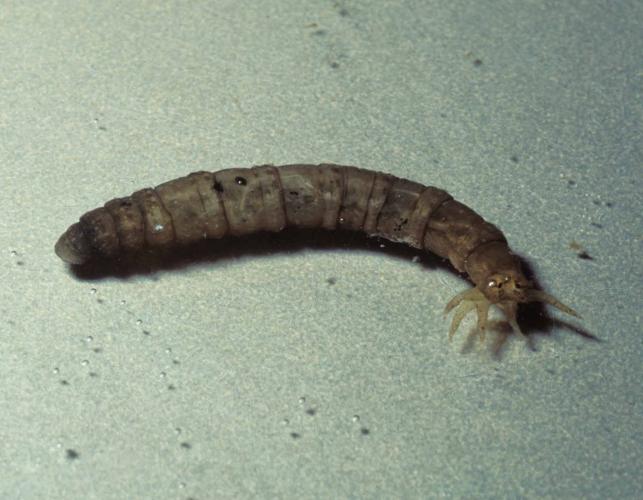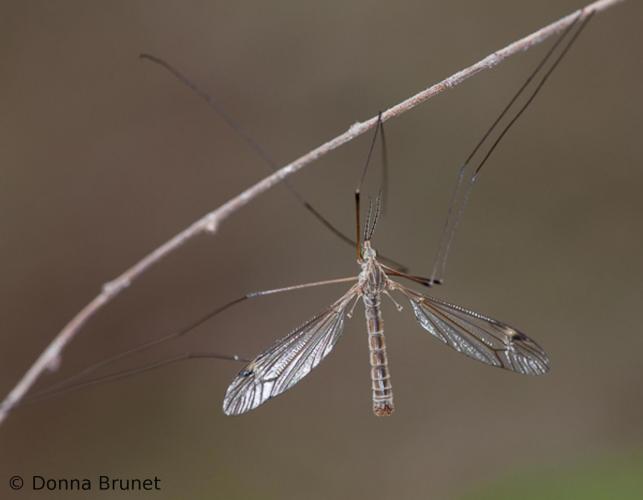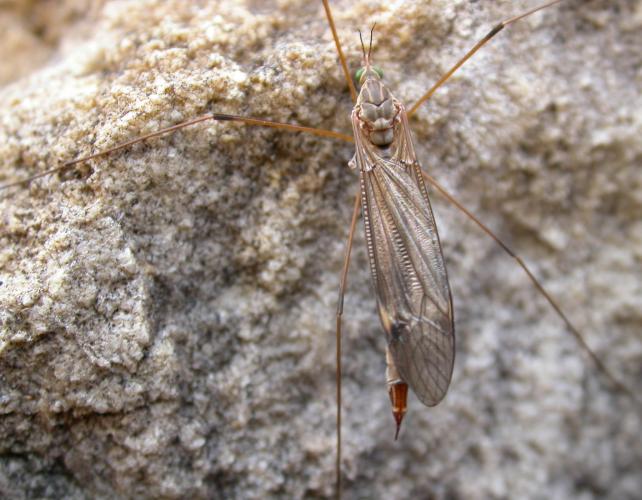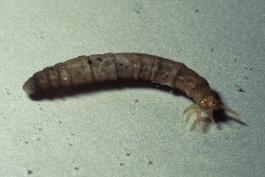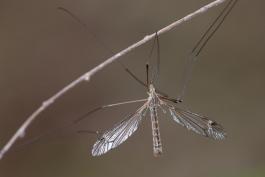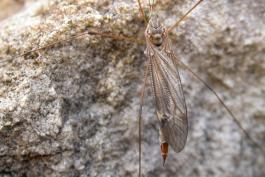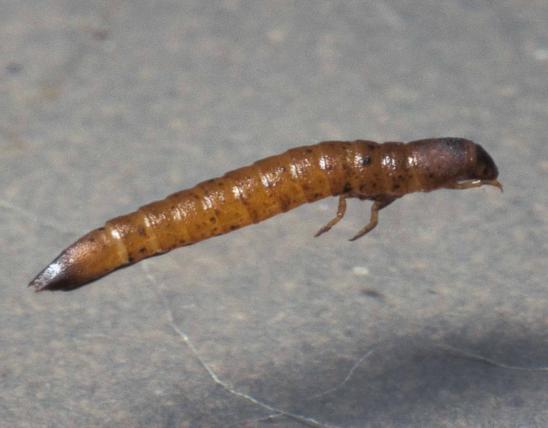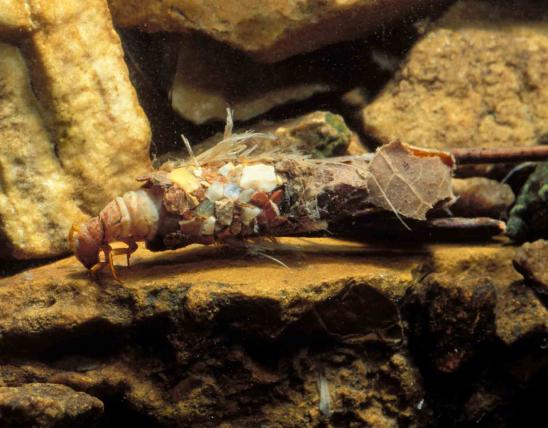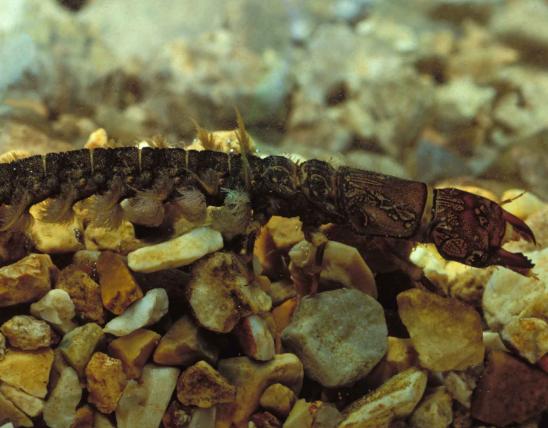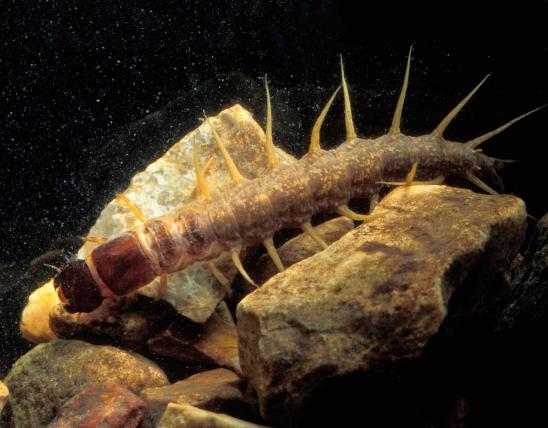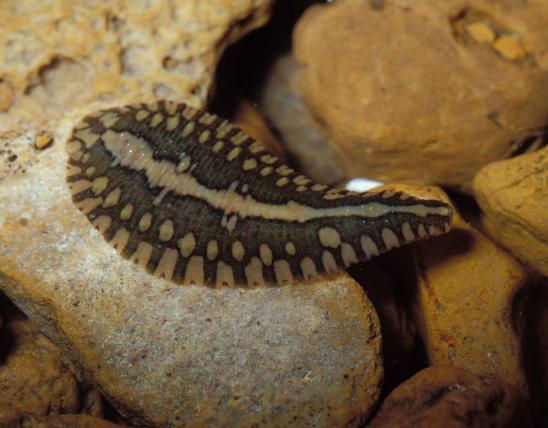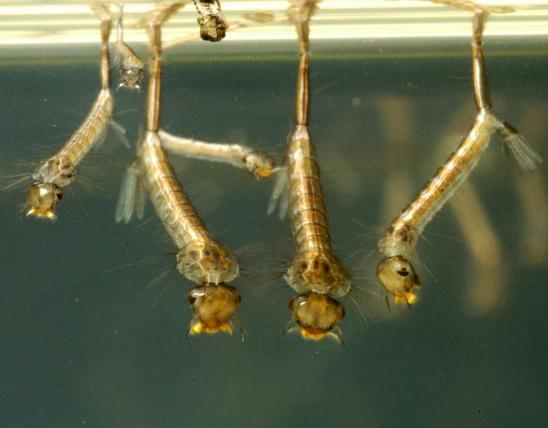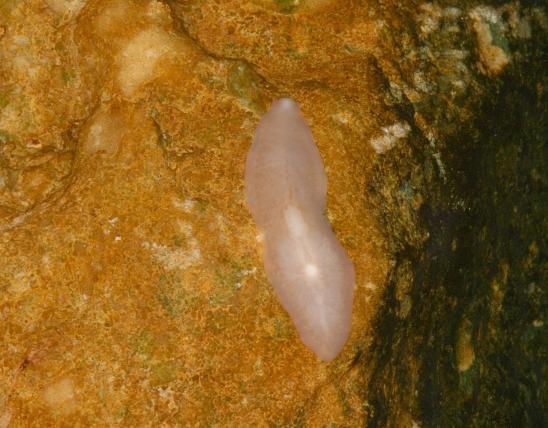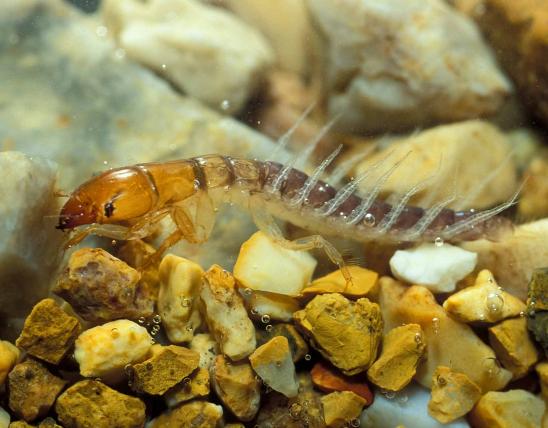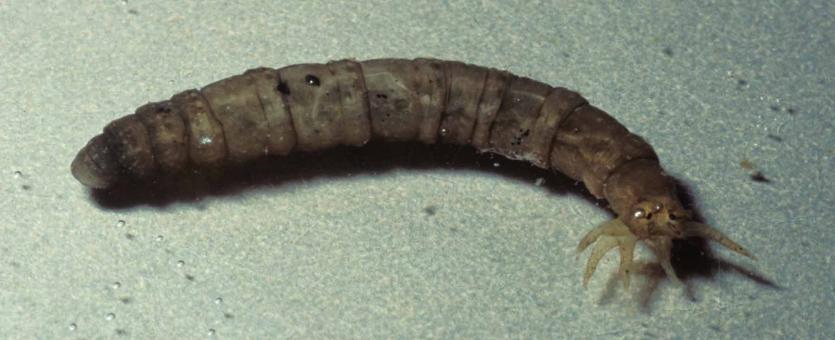
There are hundreds of species of crane flies in North America. The larvae are essentially tan, gray, or greenish grubs: plump, segmented caterpillars with a definite head and with tiny, fleshy projections at the hind end. They lack legs. Sometimes you can see the dark line of their digestive tract under the translucent body covering.
The adults look like giant mosquitoes. They have slender bodies, very long legs, and one pair of wings that are often held out at a 45-degree angle to the body. Just behind the wings, attached to the body, are two small, antennae-like appendages called halteres. These function like gyroscopes during the crane fly’s weak and wavering flights. The mouthparts look like a snout.
Female crane flies have thicker abdomens, which have a pointed (and harmless) tip for egg-depositing. Males have pincerlike claspers at the tip of the abdomen.
Adult crane flies can be distinguished from mosquitoes by their lack of a piercing, tubelike mouth, a lack of scales on the wing veins, and a V-shaped groove on the thorax (the body part behind the head, from which the wings emerge).
Larva length: to about ½ to 1 inch (varies by species and age).

Statewide.
Habitat and Conservation
Crane fly larvae are usually aquatic, living in streams and lakes, but also in moist places such as under leaf litter in ditches and sometimes underground. Because they can fly, the adults can be found nearly anywhere. Most often they occur in moist woods and fields, and near streams and ponds. Different species can be found during spring, summer, and fall.
Food
The many different kinds of crane flies have different lifestyles. The aquatic larvae often eat decaying vegetation and leaf debris. Some species eat other insects, including mosquito larvae. Where terrestrial larvae eat roots, they can be lawn pests. As adults, many crane flies do not eat at all, and only focus on mating. Those adults that do eat tend to drink nectar from flowers.
Life Cycle
Like mayflies, the winged adult crane flies usually do not eat, and spend their brief time mating and laying eggs. Females lay their eggs either under water or in soil near water. The larvae can take a few months or up to five years developing under water, depending on species. Then they pupate and later emerge as adults. Most crane flies have only one brood a year.
Human Connections
Crane flies do not bite. The larvae of some species can be lawn pests. The aquatic larvae of most other species are sensitive to pollution and a decline in their numbers can indicate (for example) that pesticide runoff from lawn treatments is present and harming stream life.
Ecosystem Connections
Like many insects that spend their immature stages feeding and growing under water, crane flies grow up, take flight, return to the terrestrial places and become food for land creatures. Thus the crane fly returns aquatic nutrients back “upstream” to the land.
